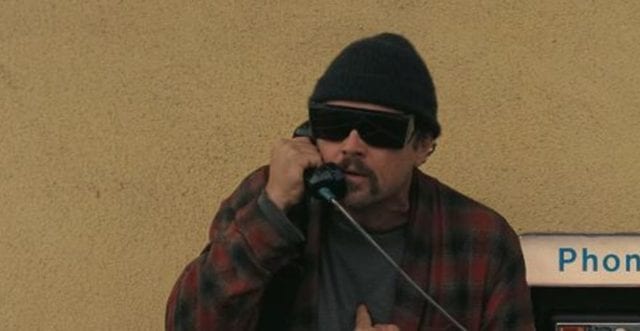
The trailer for Paul Thomas Anderson’s latest film, One Battle After Another, was released in March. Since then, the buzz around it has only escalated. Several media houses claimed that filmmaker Steven Spielberg had watched it at least three times and praised it profusely even before its official release. After release, the frenzy has only intensified, with cinephiles calling it the film of the decade.
While Anderson’s films have always been critically acclaimed, they haven’t exactly enjoyed mass popularity. His loyal fanbase swears by his eccentric filmmaking choices, but his work has largely remained niche. Even his last film, Licorice Pizza (2021), failed to attract a wider audience. The recurring complaint was that his films felt overlong and indulgent.
Yet, on closer examination, the film fails to make any coherent political argument. It doesn’t say much beyond implying that even Black women activists can be misguided, power-hungry, or violent. Anderson seems to share a similar disdain for both White supremacists and radical Black activists. At best, the film speaks from the perspective of a liberal White man who values the status quo above all else. The film constructs the pretence of radical politics to sell an action-packed spectacle. Interestingly, audiences don’t seem to mind this at all.
To understand the popularity of One Battle After Another, it is helpful to examine how we arrived at this point. From the 2010s onwards, amid the global rise of right-wing governments, cinema and other art forms grew increasingly political in their response. Political films also began finding mainstream acceptance. Even in India, we saw the growing market for anti-caste narratives. Nagraj Manjule’s Fandry (2013), Pa Ranjith’s Kaala (2018) and Mari Selvaraj’s Pariyerum Perumal (2018) are among the films that approached anti-caste politics with a rare and refreshing sense of sincerity.
The growing appetite for political cinema revealed that audiences were open to being confronted and provoked with new ideas. However, within a decade, fatigue set in. Audiences started expressing discomfort with how overtly political films had become.
This led filmmakers to maintain a careful balance, infusing just enough politics to draw attention, without crossing into territory that might unsettle viewers. As a result, from around 2020, films began addressing radical politics without really saying anything significant. Sudha Kongara’s Soorarai Pottru (2020), based on the life of Captain G R Gopinath, inserted overt anti-caste symbolism, even going so far as to recast the Air Deccan founder’s traditional Brahmin wedding as a self-respect marriage, complete with images of Dr Ambedkar and Periyar. Vetrimaaran’s Asuran (2019) converted caste violence into a commercial revenge drama. The second halves of Karthik Subbaraj’s Jigarthanda DoubleX (2023) and Retro (2025) abruptly dive into Adivasi rights, even though both films are essentially pulp thrillers.
Now, more than ever, flaunting radical politics has turned into a convenient marketing strategy for films. But a film becomes a commercial success only when its politics serves as a superficial cover. Beneath that, audiences still expect a conventional action or revenge spectacle. Politics has become the most attractive masala ingredient in cinema today, more potent than sex, action, unrequited love, or even parent-child sentiment.
Anderson seems to understand this perfectly. One Battle After Another not only parades the appearance of radical politics but also packs in interracial sexual tension, car chases, gunfights and a touching father-daughter relationship. It even depicts two White men sulking after being deserted by the same Black woman. Unsurprisingly, what we remember most from the film is not its supposed radicalism but a thrilling hide-and-seek car chase.
In the Rambo films of the 1980s, we saw a shirtless Sylvester Stallone wielding a massive gun. One Battle After Another belongs to that same cinematic world, except here, it’s a pregnant Black woman, belly exposed, holding the gun because that’s the masala flavour of the season — radical politics, stylised and aestheticised, packaged as the ultimate cinematic thrill.
The writer is a Chennai-based filmmaker